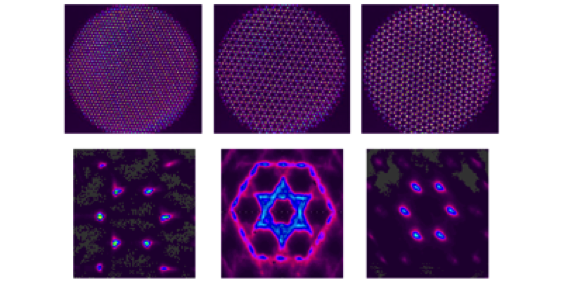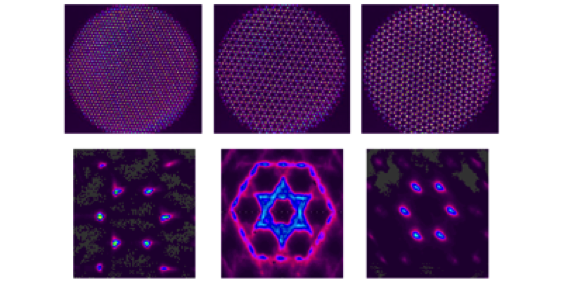Let a Thousand Lasers Shine
From water molecules in ice to spins in magnetic materials, physical systems are sometimes spoiled for choice. This can occur if, out of many configurations, no single ground-state arrangement is favored. Such frustrated systems have been invoked to explain a number of physical phenomena, including magnetic monopoles, high-temperature superconductivity, and the fractional quantum Hall effect, so researchers have sought to create model systems to test out ideas about frustration with complete control. In Physical Review Letters, Misha Nixon and colleagues at the Weizmann Institute of Science, Israel, report experiments with more than a thousand individual laser beams in a single optical resonator in which controllable coupling can produce more realistic forms of frustration for further study.
The researchers placed a mask containing thousands of tiny holes between the mirrors of an Nd:YAG laser. Each aperture defined a separate laser path, and different arrangements of the holes established different lattice patterns: hexagonal, triangular, or the kagome “basket weave.” By changing the position of the laser cavity output mirror, the authors could couple the lasers together by allowing light to leak from one laser to its neighbors. As the lasers go in and out of phase, patterns of optical interference change in the laser output. This allowed the authors to reproduce the frustration phases seen in the well-known model of spins, as well as absence of long-range order found in frustrated systems and its removal by introducing next-nearest-neighbor coupling. – David Voss





